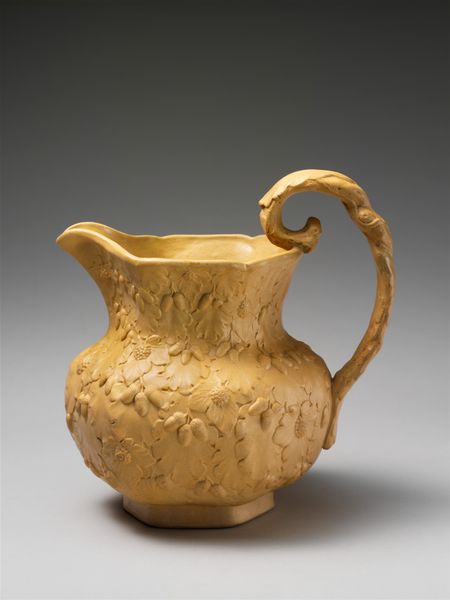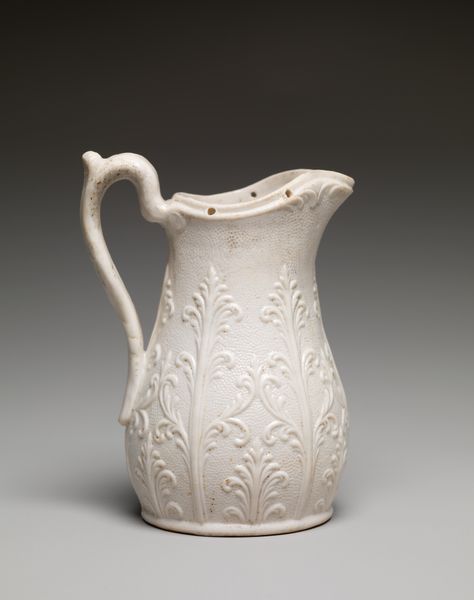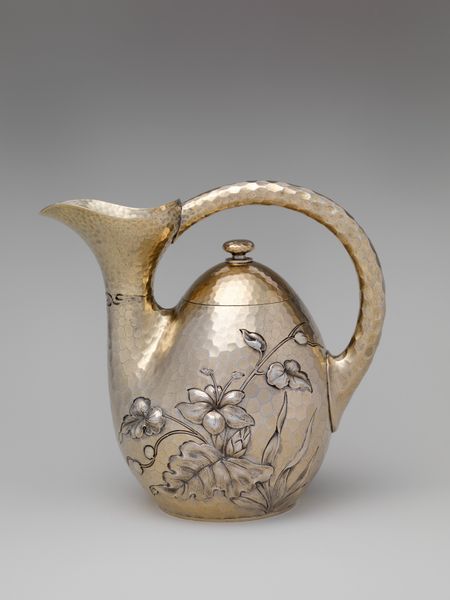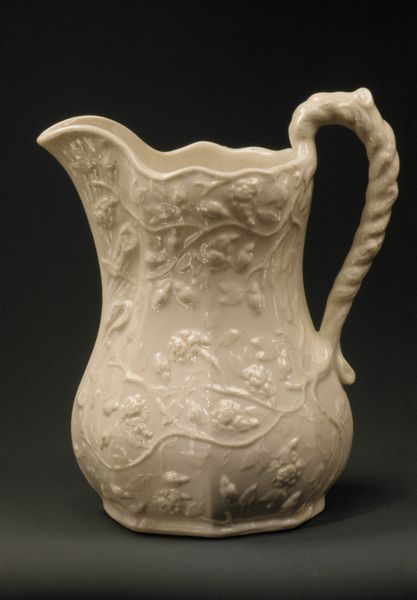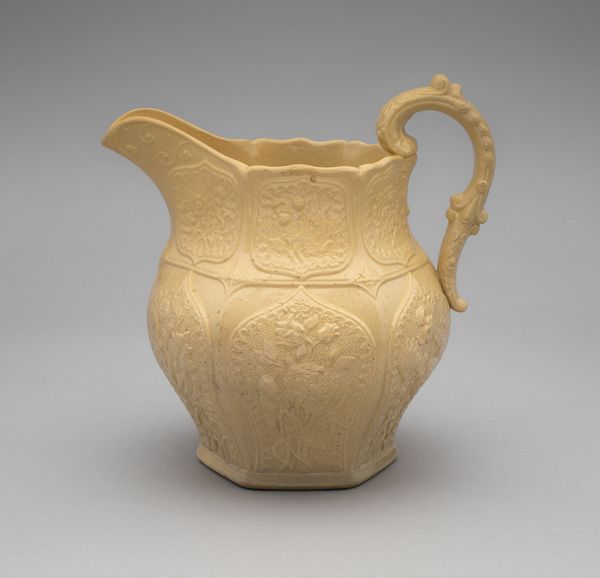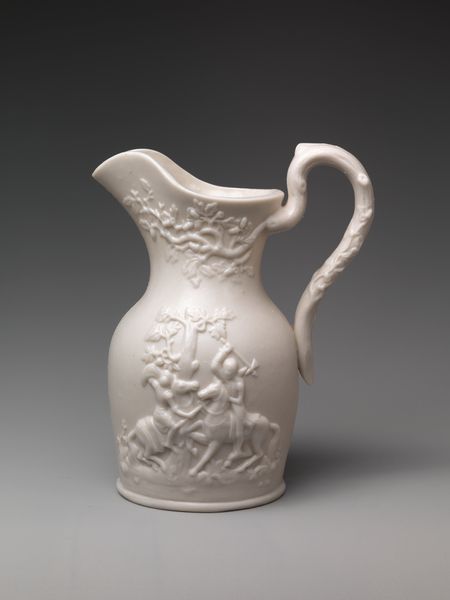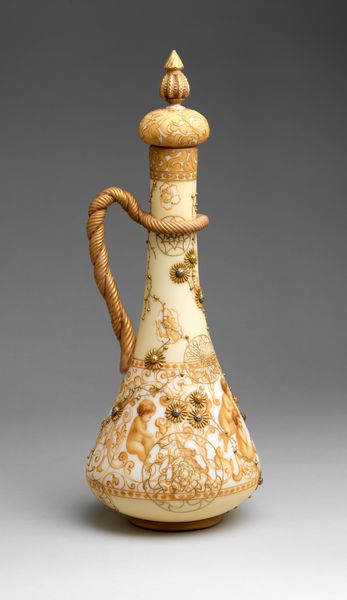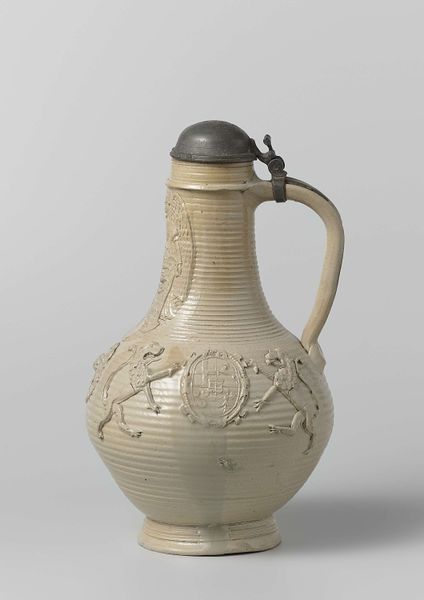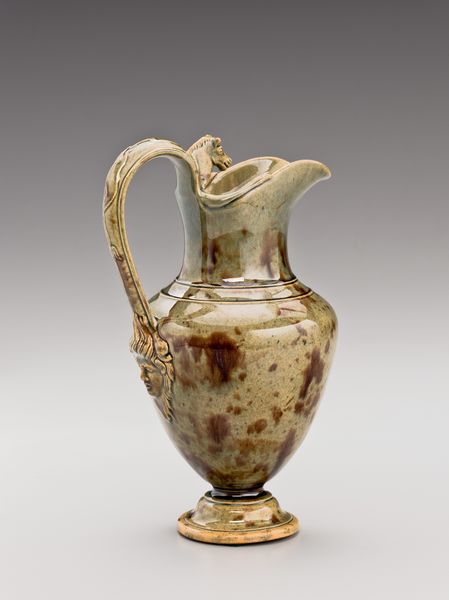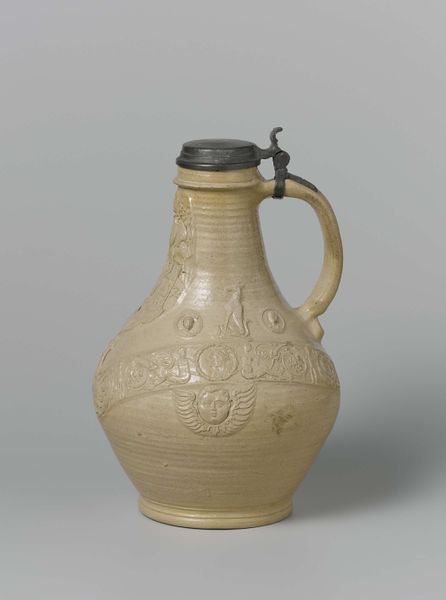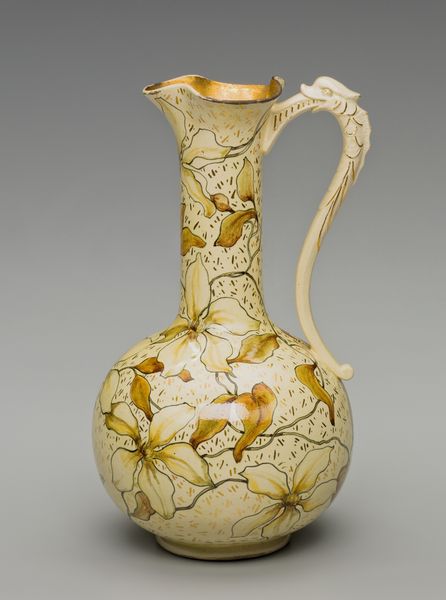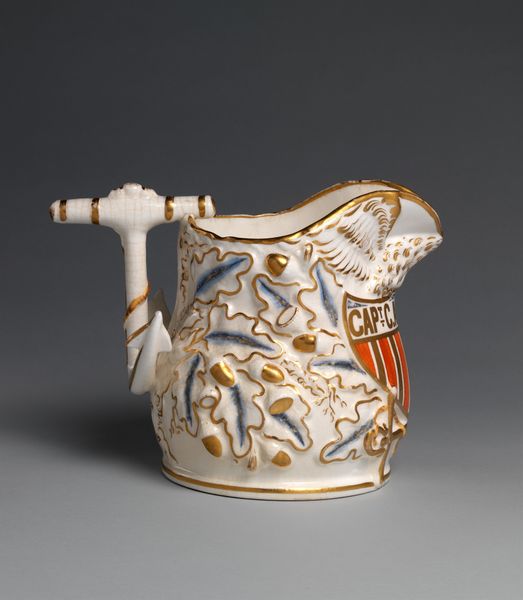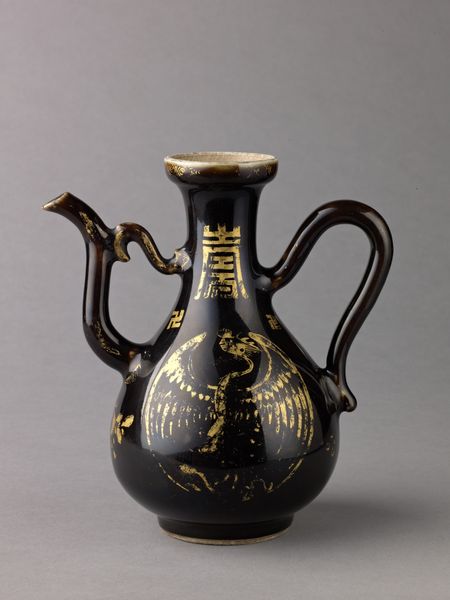
ceramic, sculpture
#
ceramic
#
stoneware
#
sculpture
#
ceramic
Dimensions: 10 3/8 x 7 3/4 x 6 1/2 in. (26.4 x 19.7 x 16.5 cm)
Copyright: Public Domain
Curator: This is a stoneware pitcher created around 1829 by the D. & J. Henderson Flint Stoneware Manufactory. It resides here at the Metropolitan Museum of Art. Editor: My first impression is ornate; almost exuberantly so. Look at the pale ceramic offset by those brown glazed details near the lip of the pitcher. It feels celebratory, like it's meant to hold something special. Curator: Indeed, pieces like this tell us a great deal about the rise of American manufacturing and consumer culture in the 19th century. Stoneware was becoming increasingly accessible, a step up from more rustic earthenware but not as costly as porcelain. Editor: It's amazing how they achieved this level of detail with stoneware. You see those swirling leaves and the little human figure integrated into the handle. It's almost mass-produced yet has very skilled craftsmanship. Curator: Absolutely, and this kind of decoration points to the influence of neoclassical designs filtering down to more utilitarian objects. The museum context elevates it, but this was intended for middle-class homes, reflecting social aspirations through accessible ornamentation. Editor: Consider the firing process. The labor, the technical skill required to control the heat and get a piece this size without imperfections. It reflects not just artistry but an industrial process reliant on skilled workers whose contributions often go unacknowledged. Curator: That's right. Looking closer, we see these motifs weren’t just decorative flourishes; they communicated status. Owning such a pitcher implied a degree of sophistication and wealth available to a growing segment of society. It speaks to broader shifts in class identity and social display. Editor: It bridges the gap between fine art and the everyday. How it was handled, used, washed… the intimacy it would have had with the people who owned it. Each chip, each stain would tell a story about use and value beyond pure aesthetics. Curator: Precisely. Its display here prompts reflection on the political economy of art and access. Editor: Seeing this pitcher, I’m reminded of the material history embedded in seemingly simple objects. Curator: And I consider its role in shaping and reflecting early 19th-century American identity.
Comments
No comments
Be the first to comment and join the conversation on the ultimate creative platform.
